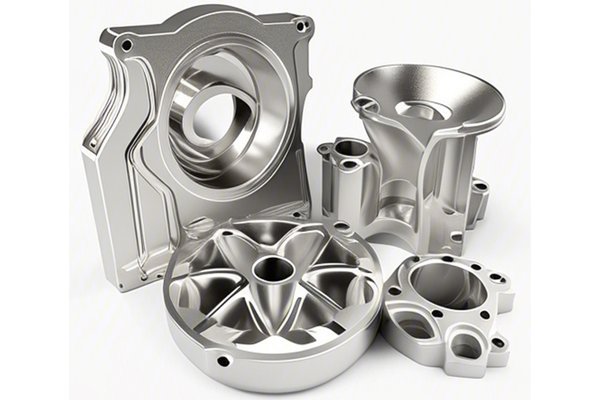Did you know that nearly 30% of all manufacturing defects arise from improper surface treatment processes? With the increasing demand for high-quality precision components in industries such as aerospace, automotive, and electronics, ensuring effective surface treatment has become crucial. In CNC (Computer Numerical Control) machining, surface treatment plays a vital role in improving the mechanical properties, aesthetic appeal, and durability of parts. But what happens when defects occur in this critical process?
In this comprehensive blog article, we will delve into the intricacies of detecting and managing defects in surface treatment within CNC machining. From identifying common defects and their root causes to implementing solutions and preventive measures, we will provide valuable insights to enhance quality assurance in your manufacturing processes.

<li>A. Definitions and Objectives</li>
<li>B. Types of Surface Treatments</li>
<li>A. Blisters</li><img title="Cornerstone_d41d8cd9" src='https://yl-machining.com/wp-content/uploads/2024/11/674545dbee82d.jpg' alt='' />
<li>B. Peeling</li>
<li>C. Discoloration</li>
<li>D. Rough Surface Finish</li>
<li>A. Equipment Issues</li>
<li>B. Environmental Factors</li>
<li>C. Material Compatibility</li>
<li>A. Visual Inspection</li>
<li>B. Non-Destructive Testing Techniques </li>
<li>C. Chemical Analysis</li>
<li>A. Process Adjustments</li>
<li>B. Repair Techniques</li>
<li>C. Re-fabrication Strategies</li>
<li>A. Regular Maintenance and Calibration</li>
<li>B. Training and Competence of Personnel</li>
<li>C. Implementing Quality Control Procedures</li>
—
A. Definitions and Objectives
Surface treatment refers to a series of processes applied to materials (usually metals) to enhance their physical and chemical properties. These treatments aim to improve corrosion resistance, wear resistance, and aesthetic qualities while ensuring the longevity of the parts being treated.
In CNC machining, quality surface treatment is of utmost importance as it directly impacts product performance. The objectives of surface treatment include preventing wear and tear, reducing friction, improving conductivity, and preparing a surface for additional coatings or finishes.
B. Types of Surface Treatments
Various surface treatments are employed in CNC machining depending on the end-use requirements. Here are some common types:
Handling surface treatment defects is key to ensuring product integrity and quality. Some common defects include:
A. Blisters

Blisters appear as raised bubbles on the surface. They form when trapped air or vapors expand beneath a coating during curing.
B. Peeling
Peeling occurs when layers of coating separate from each other or from the base material. This can result from improper adhesion due to surface contamination or insufficient surface preparation.
C. Discoloration
Discoloration is a defect where the final color of the surface differs from the intended color. This often arises from improper mixing of paint, incompatible materials, or exposure to extreme environmental conditions.
D. Rough Surface Finish
An uneven surface finish can occur due to an incorrect processing method or the application of incompatible surface treatments.
Understanding the root causes of surface treatment defects is essential to devise effective solutions. Common factors include:
A. Equipment Issues
Faulty or poorly calibrated equipment can lead to inconsistent treatment results. Regular maintenance and checks are critical to sustaining optimal performance.
B. Environmental Factors
Variations in humidity, temperature, and dust can affect the application and curing of surface treatments. Controlling the environment is essential to maintaining quality.
C. Material Compatibility
Using incompatible materials can result in poor adhesion or unfavorable chemical reactions. It is crucial to verify material chemistry and properties to avoid defects.
Detecting surface treatment defects early can save time, resources, and reputation. Here are some effective detection methods:
A. Visual Inspection
Visual inspections should be the first step in quality control. Regular checks can reveal surface irregularities, discoloration, or bubbling.
B. Non-Destructive Testing Techniques
Techniques such as ultrasonic testing, X-ray fluorescence (XRF), and magnetic particle inspection can identify subsurface and hidden defects without damaging the part.
C. Chemical Analysis
Performing chemical analysis can determine the composition of coatings and identify any discrepancies or contaminations that could lead to defects.
Once defects are detected, it’s critical to handle them effectively. Potential solutions include:
A. Process Adjustments
Modifying application techniques, adjust curing times or temperatures, and sampling procedures can effectively reduce defects in future batches.
B. Repair Techniques
Blisters can be sanded down, while peeling might require reapplication of the coating. Quick fixes may help remedy minor surface treatment issues.
C. Re-fabrication Strategies
In cases of severe defects where repair is not feasible, re-fabricating the affected parts may be necessary to maintain product quality.
Case Study 1: Aerospace Components
A leading aerospace manufacturer encountered peeling in anodized aluminum parts. By revising their surface preparation method, including standardized cleaning protocols, they achieved significant improvement in adhesion and surface finish quality.
Case Study 2: Automotive Industry
An automotive parts supplier detected discoloration issues in painted parts. After analyzing the paint mixing process and environmental conditions, they implemented stricter mixing protocols and controlled humidity levels, reducing defects to less than 2%.
In conclusion, detecting and handling defects in surface treatment is not just a quality assurance measure; it is a critical component of the CNC machining process that can significantly impact the end product’s performance and lifespan. Through understanding common defects, implementing detection methods, and applying practical solutions, manufacturers can ensure higher standards of quality.
Moreover, preventive measures will create a more resilient production process that addresses potential issues before they escalate. Investing time and effort into these aspects will not only minimize defects but also enhance customer satisfaction, reputation, and ultimately, profitability.
As you reflect on the insights provided in this article, consider how they can be applied within your own CNC machining operations. The importance of surface treatment in meeting industry standards cannot be overstated. Are you ready to elevate your quality assurance processes and take your CNC machining to new heights? The future of manufacturing depends on it.




